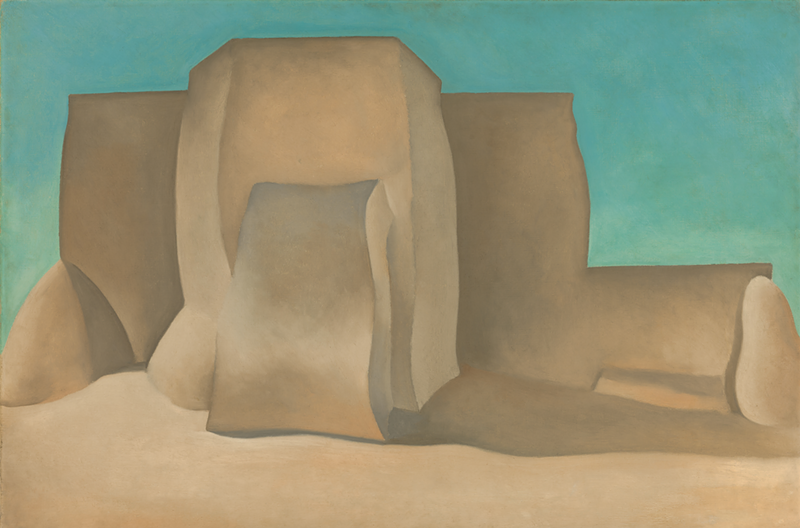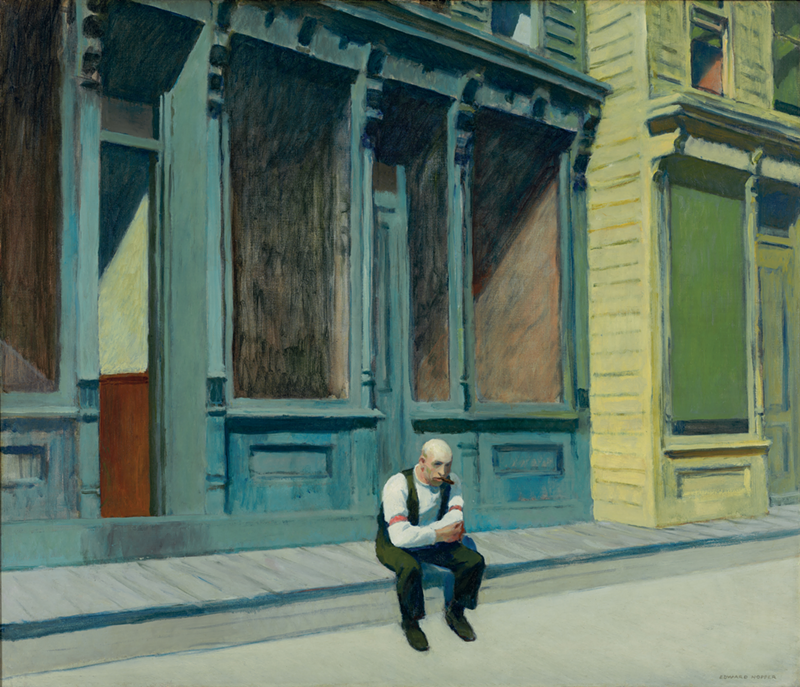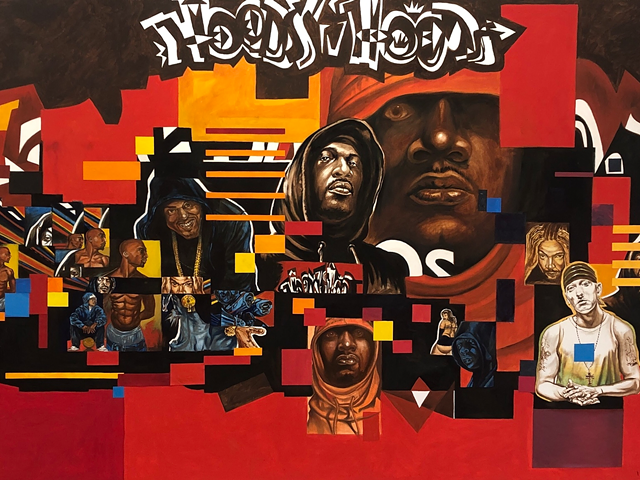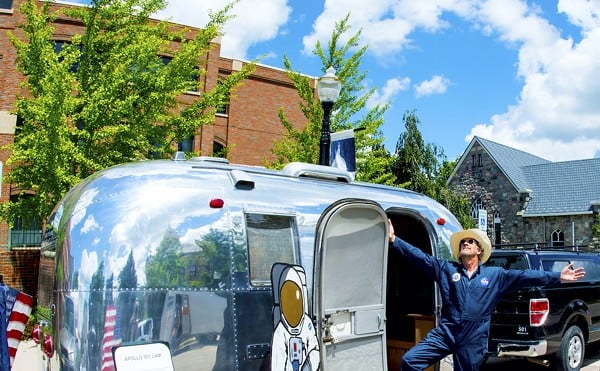
Winslow Homer to Georgia O’Keeffe: American Paintings from The Phillips Collection — the Taft Museum of Art’s current temporary exhibition in the third-floor gallery — begins with a lush work by George Inness. Set in an Italian countryside, associate curator Tamera Muente points out its three-dimensional appearance during a tour.
Entitled “Lake Albano,” a cypress tree cuts softly through the middle, acting as a space divider. Tile-roofed villas peek out from hills in the distance. In the foreground, people lounge, their features hazy and soft. Painted in 1869, the work represents the crossroads of Romanticism and Realism.
In the same room, Homer’s painting “To the Rescue” hangs in contrast. Two women walk along a seashore; they blur into the indistinct horizon, surrounded by clashes of white, tan and grayish blue. One of the women’s scarves hovers in the wind as a man carrying a rope follows behind them. Here, Muente says, Homer uses “broad, expressive strokes” to create a sense of human struggle against the sea.
Beginning with work in the late 19th century, the exhibit moves through 100 years, tracing all the way to the 1960s. Running through May 19, Winslow Homer to Georgia O’Keeffe includes 54 paintings and one sculpture, all drawn from The Phillips Collection in Washington D.C., which was founded on the private collection of Duncan Phillips. “You’re not only seeing a broad overview of the development of Modernism,” Muente says. “You’re also seeing an individual’s vision.”
In part, that vision was to set American artists on equal par to their European counterparts. Phillips believed that self-taught artists like John Kane and Grandma Moses, artists of color — both Allan Rohan Crite and Horace Pippin are featured — and immigrants deserved to be supported and represented. One of the sections — “Memory and Identity” — is dedicated to this.
These works vary in style and subject, from the crumbling industrial landscape of Kane’s “Across the Strip” to Grandma Moses’ “Hoosick Falls in Winter,” which warmly depicts a small town covered in fresh snow.
“You do see this dichotomy of artists inspired by nature and artists inspired by urban life and industry,” Muente says.
Of the latter category was Edward Hopper, who has two paintings featured. In one work, “Sunday,” a man sits on a curb in New Jersey. A slant of yellow light spills over his hunched body. As Muente notes, the colors seem “off kilter.” Like much of Hopper’s work, it’s a lonely depiction of modern urban life.

“There are (artists) like Georgia O’ Keeffe, who are looking at nature and they’re simplifying it, kind of distilling it to its essence. And then people who are inspired by the city as well. We’re moving through the 1920s, ’30s and ’40s, when American cities are growing at an exponential rate,” Muente says. “So people like Edward Hopper were looking at the ways the city isolated people and changed their lives.”
O’Keeffe, who played with shadows, light and form rather than fine details, often filed her subjects down to their bare bones. She once said, “It is only by selection, by elimination, by emphasis that we get at the real meaning of things.” That concept could easily translate to the work of artists that came decades after.
By the time visitors enter the last gallery, they’ll be greeted by complete abstraction, says Muente. But everything else builds to that. And by walking through each room — divided into thematic sections — the road to Abstract Expressionism reveals itself.
“When you move into the last space, one wall will be Cubist-inspired work, but it’s still kind of hanging on to representational paintings,” Muente says. “In those works, you’ll still be able to make out a shape here and there that maybe echoes something you would see in the real world, whereas the Abstract Expressionism paintings — unless it’s something you’re bringing to it — are not based in visual reality.”
The exhibit feels like a collective breath. Take in: salty seascapes, a minimal adobe church, smog-filled cities, families unwinding. Let out: vibrant colors, swirls of shapes, uneven textures, saturation.
"It gives our visitors the chance to see the road to abstraction; because we don't show abstraction in our permanent collection, we get to do that in our temporary show," Muente says.
Winslow Homer George O’Keeffe: American Paintings From the Philips Collection runs through May 19 at the Taft Museum of Art (316 Pike St., Downtown). More info/tickets: taftmuseum.org.






